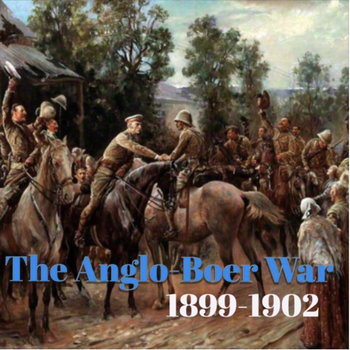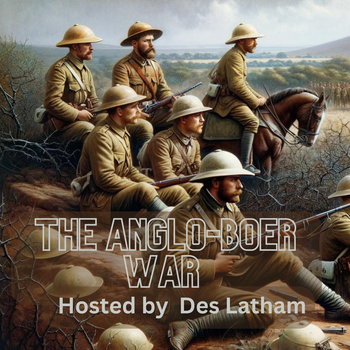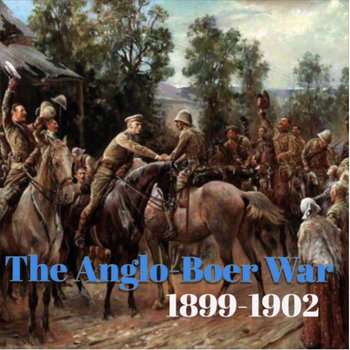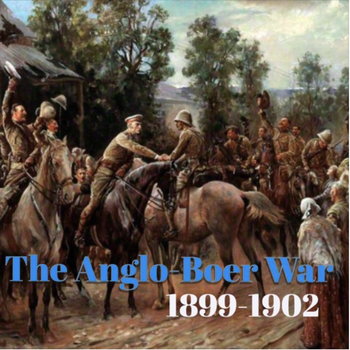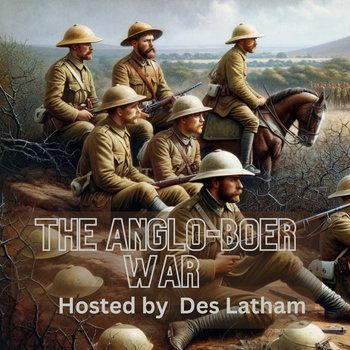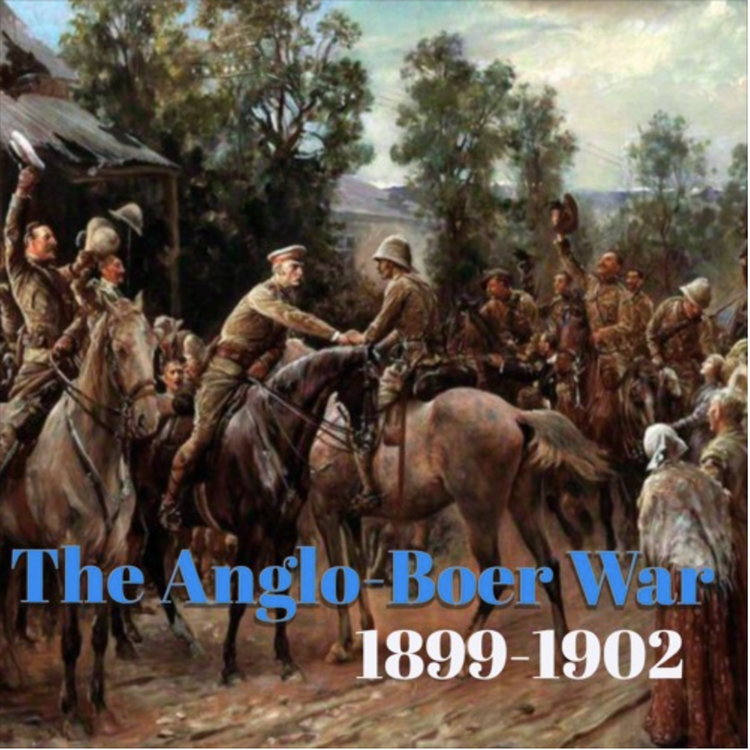
Episode 40 - Making Lord Kitchener’s acquaintance as de Wet’s farm burns
Loading player...
It’s the morning of 10th June 1900, and we’re riding with General Christian de Wet who is about to make Lord Kitchener’s acquaintance far from the capital Pretoria, where Lord Roberts has bivouacked with his 16 000 troops, expecting the Boers to quit fighting.
But they don’t.
In the Free State, General de Wet has been creating his own brand of guerilla warfare which the British realise suddenly is likely to extend the conflict at least for a few weeks. Once again they’re wrong - the war is about to extend for two more years and worse for the British, the new brand of highly mobile hit and run warfare has never been seen. Their response eventually is to design one of the most terrifying tools created by man - the concentration camp.
Furthermore, the reason why this historic moment is so discernable from previous tactics of the same is the complexity of the Boer military structure and their complete dominance of the veld, the plains of South Africa.
They’re the Sioux or Apache warriors of South Africa but with the latest weapons, heavily armed and mightily motivated, supplied surrepticiously and constantly moving.
And de Wet is the master of his landscape, but he’s about to meet a man who eventually became one of the most hated in Southern Africa by Boer and even black South Africans - the man who was to perfect the idea of the concentration camp - Lord Kitchener.
So its the morning of June 10th, and its winter in South Africa. Kitchener has around 15 000 men under his command, de Wet a few hundred. And the Boer commander is using the British weak link as his attack point - the railway line between the inland cities and the ports of Cape Town, Port Elizabeth and East London.
De Wet is in a quandry. If he continues to attack the railway line, eventually Kitchener will catch him or surround his little force, particularly on the open plains around Heilbron and Vredefortweg.
There are no large ranges of mountains to use as strategic points, they lie further south east along the Drakensburg and the Lesotho border. So he must rely on his wits and false trails.
He says in his book Three Year’s War:
“I gave orders that the few wagons which we had with us should proceed in the direction of Kroonstad.. to the west of the line, once out of sight they were to turn sharply to the West and continue in that direction. This manoeuvre I hoped would serve to mislead the enemy, who was on the lookout for us…”
But they don’t.
In the Free State, General de Wet has been creating his own brand of guerilla warfare which the British realise suddenly is likely to extend the conflict at least for a few weeks. Once again they’re wrong - the war is about to extend for two more years and worse for the British, the new brand of highly mobile hit and run warfare has never been seen. Their response eventually is to design one of the most terrifying tools created by man - the concentration camp.
Furthermore, the reason why this historic moment is so discernable from previous tactics of the same is the complexity of the Boer military structure and their complete dominance of the veld, the plains of South Africa.
They’re the Sioux or Apache warriors of South Africa but with the latest weapons, heavily armed and mightily motivated, supplied surrepticiously and constantly moving.
And de Wet is the master of his landscape, but he’s about to meet a man who eventually became one of the most hated in Southern Africa by Boer and even black South Africans - the man who was to perfect the idea of the concentration camp - Lord Kitchener.
So its the morning of June 10th, and its winter in South Africa. Kitchener has around 15 000 men under his command, de Wet a few hundred. And the Boer commander is using the British weak link as his attack point - the railway line between the inland cities and the ports of Cape Town, Port Elizabeth and East London.
De Wet is in a quandry. If he continues to attack the railway line, eventually Kitchener will catch him or surround his little force, particularly on the open plains around Heilbron and Vredefortweg.
There are no large ranges of mountains to use as strategic points, they lie further south east along the Drakensburg and the Lesotho border. So he must rely on his wits and false trails.
He says in his book Three Year’s War:
“I gave orders that the few wagons which we had with us should proceed in the direction of Kroonstad.. to the west of the line, once out of sight they were to turn sharply to the West and continue in that direction. This manoeuvre I hoped would serve to mislead the enemy, who was on the lookout for us…”

